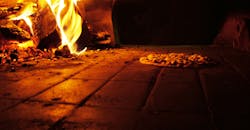Welcome to our new learn-it-all crystal oscillator series! Over our next few posts, we will cover the basics of the most common oscillator types—OCXOs, VCXOs, and TCXOs—touching on the common uses, applications, and inner workings of each. Let’s kick things off with one of our favorites: the OCXO.
When High Stability is a Must
Oven-controlled crystal oscillators (OCXOs) are used in applications where a very high degree of frequency stability is required. Sometimes these oscillators may even be referred to as temperature stabilized crystal oscillators, or just crystal ovens. Just don’t get excited about cooking any pizzas in this type of oven.
While crystal oscillators (three main types) show a high degree of stability even when the outside temperature is varied over a significant range, for some applications even higher levels of temperature stability are required. In these applications, OCXOs may provide the required solution.
As with many other crystal-based products, OCXOs are available in a wide variation of packages and package styles. The performance levels and costs also need to be considered, as these can vary considerably as well.
The Ability to Control Temperature
It is still sometimes necessary to ensure an even better degree of stability. This can be achieved by placing the crystal in a thermally insulated container with a thermostatically controlled heater. By heating the crystal to a temperature above that which would normally be encountered within the electronic equipment, the temperature of the crystal can be maintained at a constant temperature. This results in a far greater degree of temperature stability. Additionally, the crystal in the OCXO will be cut to ensure that its temperature stability is optimized for the internal operating temperature.
Consider learning more about Very High Frequency Stability vs. Temperature OCXOs.
The internal temperature for a crystal oven is commonly run at 75°C or thereabouts. It needs to be above the highest temperature likely to be encountered, or else the temperature control will not work.
The typical specification for an OCXO might be ±5 x 10−8 per degree Celsius (0.05 ppm), whereas a non-oven controlled oscillator may be between 10 and 100 times poorer. As the oscillator assembly will also contain buffering circuitry, as well as supply voltage regulation, the other characteristics of the oscillator should also be good. Typically, it might be expected that frequency stability would be around ±5 × 10−9 (0.005 ppm) per day and ±5 × 10−7 (0.5 ppm) per year and 1 x 10−-7 for a 5% change in supply voltage. These are far better than would be expected from a simple crystal oscillator.
To ensure that the optimum overall accuracy is maintained, combating elements such as aging of the crystal itself and a periodic calibration of the OCXO may be required. Typical calibration periods may be of the order of six months to a year, but the actual period will depend upon the OCXO itself and the requirements of the application in which it is being used.
More Physical Abilities of an OCXO
OCXOs are physically much larger than a simple crystal oscillator. This is because they:
- Incorporate the crystal oscillator itself
- Contain a heater
- Contain control circuitry
- House thermal insulation around the crystal oscillator
Typically, the heater will be run from a different supply to the oscillator. It does not require the same level of regulation. Indeed, the oscillator is most likely to have its own regulator to remove any stray noise and RF that may appear on the supply line. This will therefore degrade the performance of the OCXO.
The supply for the heater in the OCXO may be quite current-hungry. Some units may require an amp or so upon warm-up. This figure will reduce as the temperature inside the OCXO rises and less heat is needed. As you might imagine, the temperature is thermostatically controlled.
These OCXO units are naturally more expensive than crystals on their own, but the performance of an OCXO is considerably enhanced on that of a simple crystal in an unregulated electrical and physical environment.
Need More Details?
Wow! So much to consider and worry about when designing and selecting crystal oscillators. However, this is only the beginning. Our next post in this series will cover temperature-compensated crystal oscillators (TCXOs) in detail. Until then, check out the post Anatomy of an OCXO to learn how these qualities and abilities you just learned specifically affect an OCXO’s performance in your applications. See you soon!
About the Author
Tommy Reed
Vice President of Technology
Tommy Reed is a Director of Technology Strategy at L3Harris. In his current role, he is shaping the company’s strategy through focused R&D and a solid understanding of the changing threat environment. Prior to joining L3Harris, Tommy was Chief Technology Officer at Bliley Technologies, where he led the engineering function and set the technology strategy for the company. Tommy holds a MSEE from the University of Florida.

